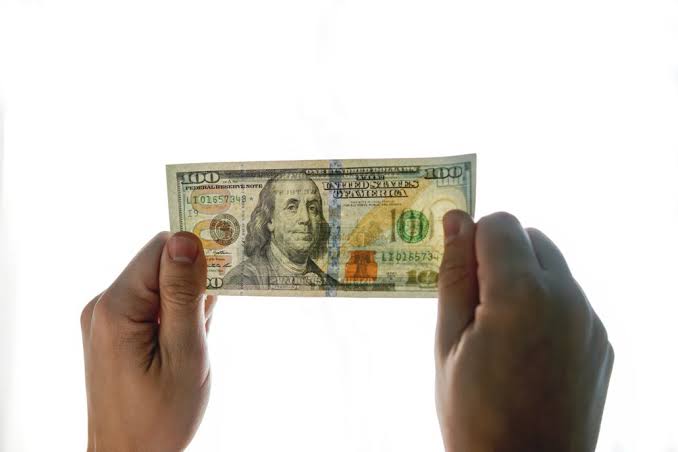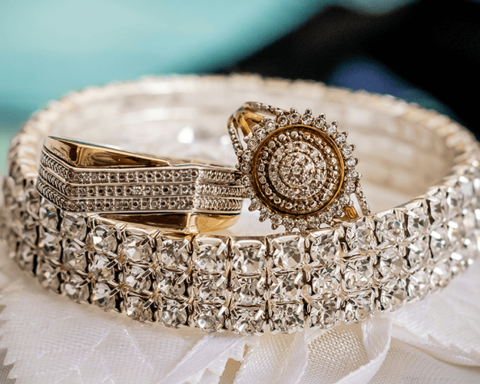According to the US Department of Treasury, an estimated USD 70 million to USD 200 million in counterfeit dollar bills are circulating in the United States. Among these, 100-dollar bills are the most counterfeited, as reported by the Department of Homeland Security. With such a high volume of counterfeit bills, it’s essential to learn how to spot a fake 100-dollar bill. Check for the color-shifting ink and security features such as the 3-D ribbon, watermark, and raised printing to identify a fake $100 bill.
This guide will help you identify counterfeit 100-dollar bills through various techniques and security features.
Interesting Read: Electronic Voice Phenomenon
Key Differences Between Real and Counterfeit 100-Dollar Bills
Identifying a counterfeit 100-dollar bill involves checking several key security features, including the serial number, color-changing ink, holographic strips, watermark, and microprinting.
Security Thread
One of the first things to check on a 100-dollar bill is the security thread. Hold the bill up to the light and look for an embedded thread running vertically to the left of the portrait. This thread should be imprinted with the letters “USA” and the number “100” in an alternating pattern, visible from both sides. Under ultraviolet light, the security thread on a real 100-dollar bill glows pink.
3-D Ribbon
The blue ribbon on the bill is another critical security feature. On a genuine 100-dollar bill, the bells on the ribbon change to “100s” as you move your focus. The bells and numbers move sideways when the bill is tilted back and forth and move up and down when tilted side to side. This ribbon is woven into the paper, whereas on a counterfeit bill, it is printed on the surface.
Bell in the Inkwell
A real 100-dollar bill features a color-shifting bell in the inkwell. When tilted, the copper-colored inkwell changes to green, making the bell appear and disappear. Counterfeiters generally cannot replicate this color-shifting effect.
Portrait Watermark
When you hold a 100-dollar bill to the light, you should see a faint image of Benjamin Franklin in the blank space to the right of the portrait. This watermark should be visible from both sides of the note. On a counterfeit bill, this image is often missing or poorly replicated.
Numeral 100
The numeral “100” in the bottom right corner of a real 100-dollar bill changes from copper to green when tilted, exhibiting a color-shifting pattern. This feature is typically absent on counterfeit bills.
Additional Features to Identify Counterfeit 100-Dollar Bills
Serial Numbers
On a real 100-dollar bill, the unique combination of serial numbers appears twice, once at the upper left and once at the lower right on the front of the note.
Microprinting
Using a magnifying glass, you can see microprinted text on several parts of a real 100-dollar bill:
- “THE UNITED STATES OF AMERICA” on Benjamin Franklin’s jacket collar.
- “USA 100” around the blank space containing the portrait watermark.
- “ONE HUNDRED USA” along the golden quill.
- Small “100s” along the borders.
Texture and Printing Method
The portrait of Benjamin Franklin on a real 100-dollar bill should feel rough to the touch due to the intaglio printing method used. This raised printing is difficult for counterfeiters to replicate.
Independence Hall
The back of a real 100-dollar bill features a vignette of Independence Hall. The level of detail and clarity in this image can be another indicator of authenticity.
General Tips for Spotting Counterfeit Bills
Watermark
For modern $10, $20, $50, and $100 bills, the watermark is a replica of the portrait and is located to the right of the printed image.
Color-Shifting Ink
Modern $10, $20, $50, and $100 bills use color-shifting ink in the right-hand corner, showing the denomination. On a $100 bill, there’s an additional color-shifting feature next to Benjamin Franklin’s portrait.
Security Thread and UV Light
Each denomination has a security thread that glows a specific color under UV light:
- $5 bill: Blue
- $10 bill: Orange
- $20 bill: Green
- $50 bill: Yellow
- $100 bill: Pink
Paper and Texture
The paper used by the Federal Reserve for printing currency contains blue and red security fibers woven throughout the material. The raised texture of the print, especially on the shoulders of the portraits, is another sign of authenticity.
FAQs on Counterfeit 100-Dollar Bills
How to identify fake USD 100 notes?
- The color-shifting ink on the USD 100 notes helps identify fake notes. A real note will show a change in the numeral “100” from copper to green when tilted.
What makes the new $100 bill hard to counterfeit?
- Security features like special paper, watermarks, color-shifting ink, and holographic strips make it challenging for counterfeiters to replicate the new $100 bill.
What anti-counterfeiting feature is found in the $100 bill?
- The real 100-dollar bills have color-shifting ink on the bottom right-hand corner and the Liberty Bell image also using this ink.
Is it difficult to identify a counterfeit 100-dollar bill?
- No, it’s not difficult to spot a counterfeit bill if you know the features to look for, such as the watermark, security thread, microprinting, raised printing, and the 3-D ribbon.
By understanding these features and how to check them, you can protect yourself from counterfeit 100-dollar bills. If you encounter counterfeit currency, report it to the local US Secret Service Field office.
Conclusion
Counterfeit 100-dollar bills are prevalent, but with the right knowledge, identifying them is straightforward. By checking for security threads, 3-D ribbons, color-shifting bells, watermarks, microprinting, and texture, you can easily distinguish between real and fake bills. Stay vigilant and use these tips to protect yourself from counterfeit currency.
Stay in touch to get more news & updates on Essentialtribune!








